Suborder Oniscidea Rank Species | Scientific name Porcellio scaber Higher classification Porcellio Order Isopods | |
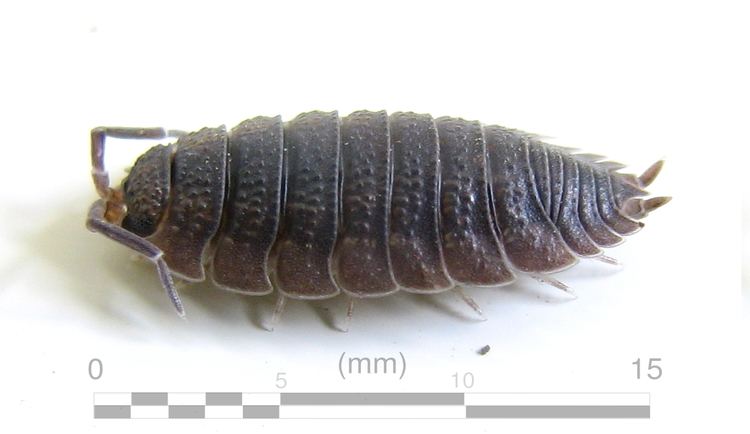 | ||
Similar Porcellio, Isopods, Armadillidium vulgare, Woodlouse, Oniscus asellus | ||
Porcellio scaber description
Porcellio scaber (otherwise known as the common rough woodlouse or simply rough woodlouse), is a species of European woodlouse. It is not to be confused with Armadillidium which are able to curl into a ball to defend themselves.
Contents
- Porcellio scaber description
- Porcellio scaber
- Distribution
- Description
- Habitat
- Feeding
- Anatomy
- Behavior and Reflex actions
- References
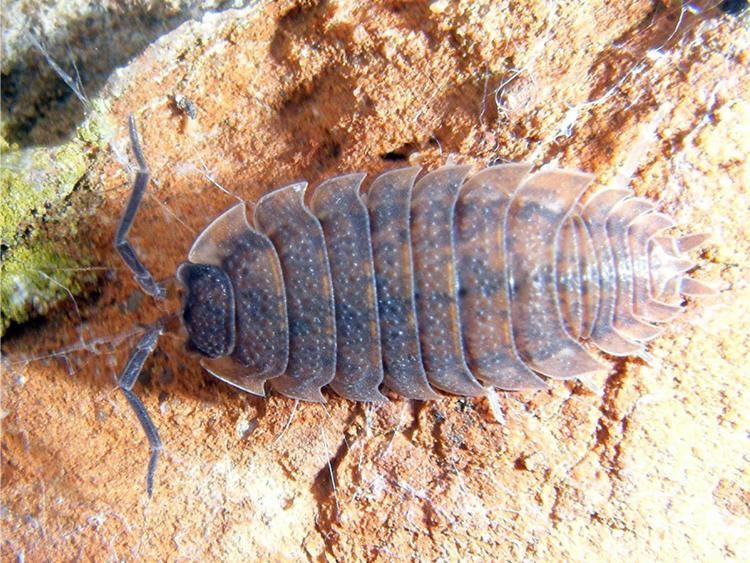
Porcellio scaber
Distribution
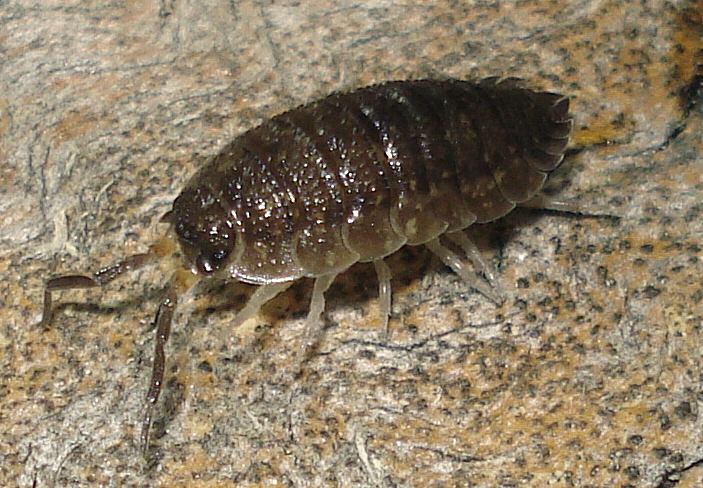
Porcellio scaber is found across Central and Western Europe. In the United Kingdom, it is one of the "big five" species of woodlouse. It has also colonised North America, South Africa and other areas, largely through human activity. It is also the most common species of woodlouse found in Australian gardens.
Description
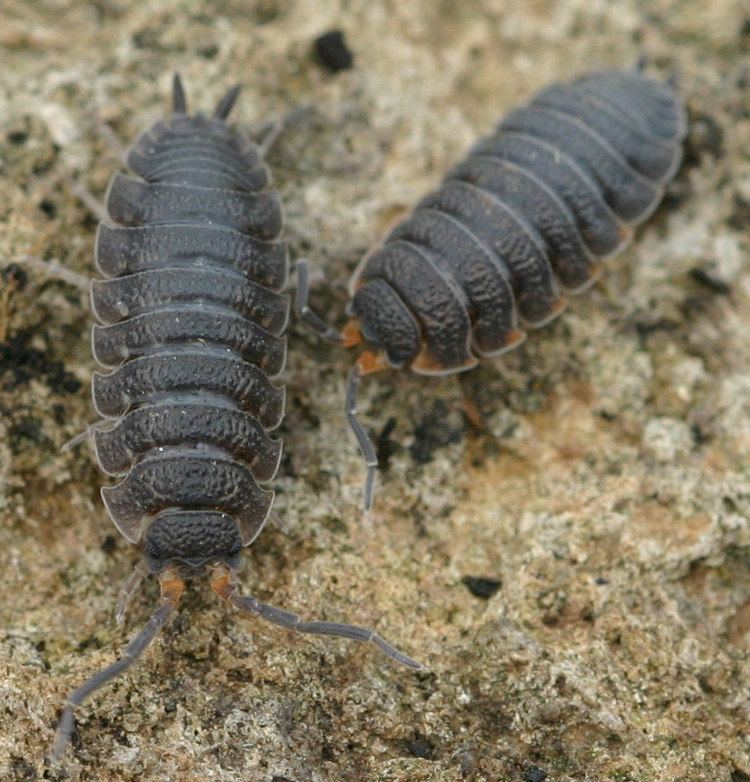
P. scaber can grow up to 20mm long, and is usually a grey colour, paler underneath, although brown, blue, yellow or pinkish hues may also be observed (like many other woodlice, a red variety can often be found in coastal areas). It lives in a wide variety of habitats which contain reasonable to high levels of humidity, but it is less dependent on water than Oniscus asellus.
Habitat

P.Scabers lose water by diffusion through their permeable exoskeletons. Because of this, to avoid desiccation they will often seek out environments with humid air and plenty of ground moisture, preferably cold to minimize rate of water loss, and dark to avoid detection by predators.
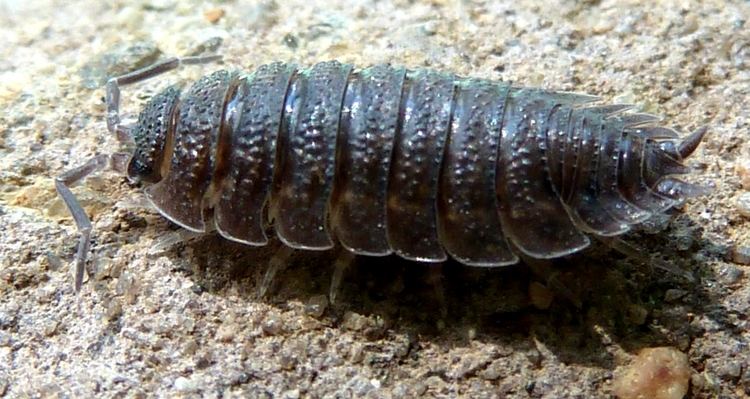
P.Scabers will often be found in conditions such as ones under plant pots or bricks in gardens, because they provide shelter and a nearby source of food.
Feeding
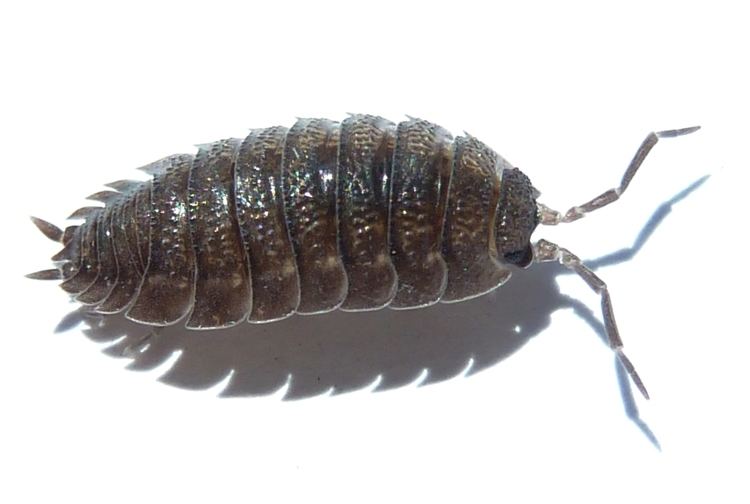
P.Scabers are detrivores meaning that they mainly feed on dead matter and excreted waste (fallen leaves, wood, etc.) however a larger group can start to work their way through live plants as well, causing problems for any gardens they inhabit.
They often form one of the bottom rungs of the food chain with many species preying on them (millipedes, shrews, etc.) and one species of spider (Dysdera crocata) preying entirely on woodlice.
Anatomy
P.Scaber woodlice has a head composed of three lobes. The head has a compound eye and two antenna. The body is covered by a segmented exoskeleton called the thorax.
As woodlice excrete their nitrogenous waste as ammonia, their exoskeleton is permeable to ammonia and water, and lacks a waxy cuticle.
Behavior and Reflex actions
Woodlice are not complex enough to actively seek a favorable environment so their movement is controlled almost entirely by reflexes. To attempt to find an environment where they will lose less moisture and then stay there P.Scabers will alter factors such as speed and rate of turning (orthokinesis and klinokinesis). When in a dry or hot environment, P.Scabers can be observed to increase speed and turn more often to attempt to leave the unfavorable environment. In a moist dark cool environment, they will slow down dramatically and often stop altogether. To avoid desiccation, most woodlice (including P.Scabers) exhibit thigmokinesis, slowing down or stopping when in contact with multiple sides (such as the corner of a box or a crack between two bricks), which leads to clumping of woodlice to reduce their surface area through which water can be lost. Another manifestation of this is a woodlouse in a Petri dish being unwilling to ever leave the edge of the dish.
Another behavioral mechanism exhibited by P.Scabers is turn alternation. When turning in the wild due to klinokinesis, it was observed that turns would alternate between left and right. This would help a P.Scaber escape from a harmful environment or predator more efficiently as alternating turns average to form a straight line, unlike random turns which may well become a circle back to the predator. Several mechanisms for this have been proposed such as short term memory or following the outside wall, but the theory with most support is the BALM mechanism, which suggests that on the original turn the legs on the outside of the turn will become relatively more tired and so will end up being overpowered by the legs on the inside of the turn, causing it to turn the previous way from last time.
